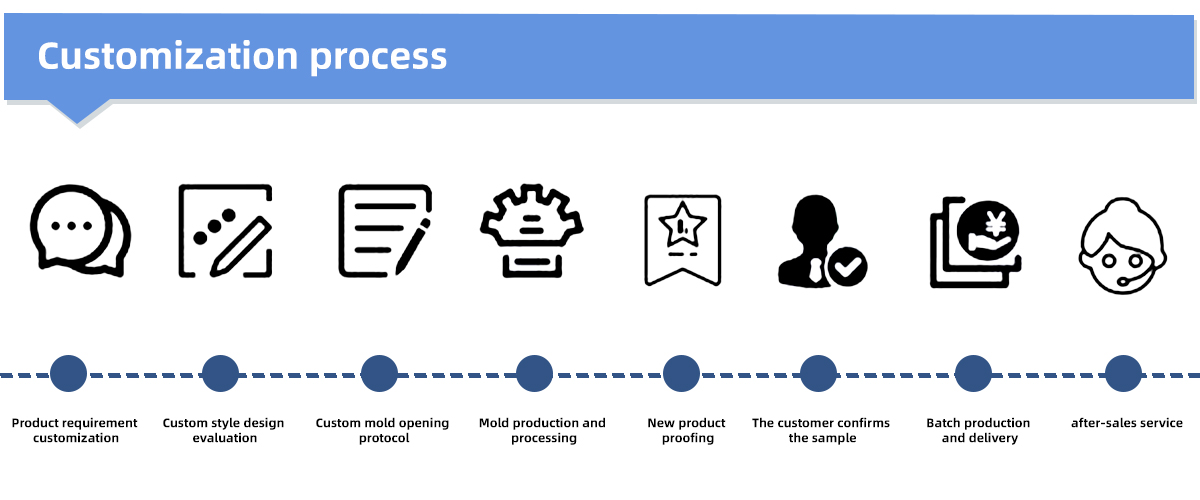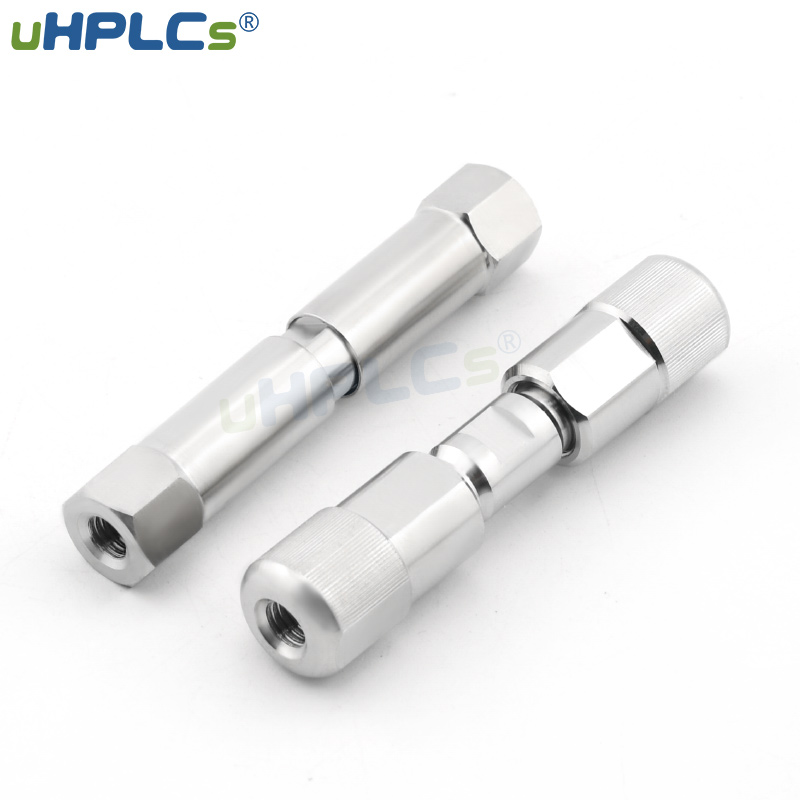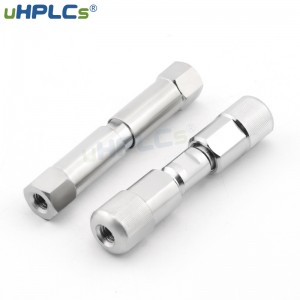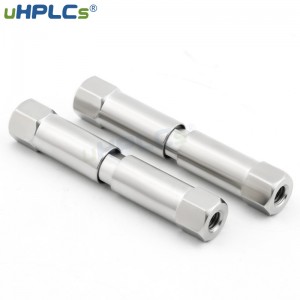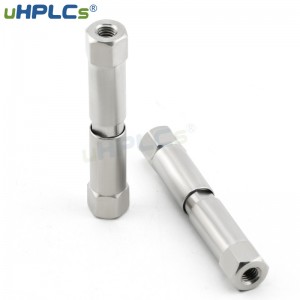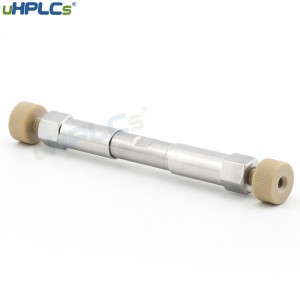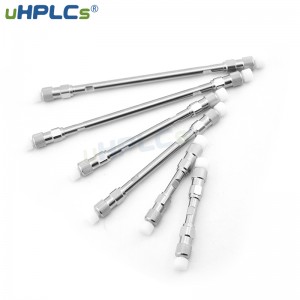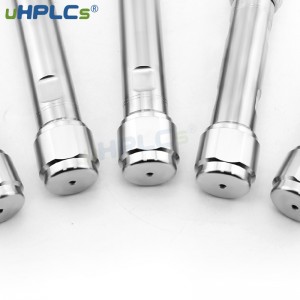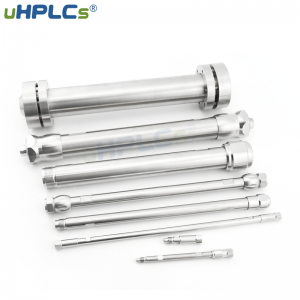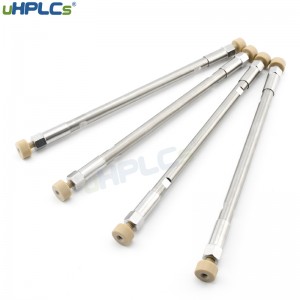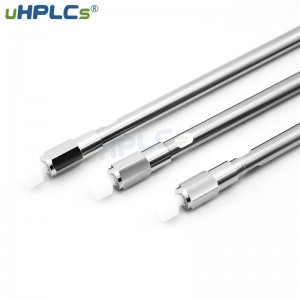UHPLCS USHA C18-A HPLC Column 4.0x30mm
Many organic acids, such as tartaric and malic acid, are highly polar and difficult to retain on a reversed phase column; this often requires a high aqueous or a buffered-water mobile phase to achieve the desired separation. Using the high-water content mobile phase with many reversed phase columns leads to a dramatic decrease in retention over time. This loss in analyte retention in a high aqueous mobile phase is referred to as “phase collapse” Polar-modified reversed phase columns are becoming popular for polar compound analysis due to phase collapse.
uHPLCs USHA C18-A HPLC Columns (4.0x30mm) features and applications: low carbon content, suitable for separation of strongly polar and hydrophilic compounds. Reversed-phase columns perform well under aqueous conditions, helping to avoid phase collapse and shift retention times.
|
Particle Size |
1.8um, 2um, 3um, 5um, 10um, 20um, 30um |
|
Pore Size |
70 Å, 100 Å, 150 Å, 200 Å |
|
Carbon Content |
10% |
| End-capping |
Yes |
|
PH |
2~8 |
The USHA C18-A column was used to analyze six organic acids present in many food samples. The polar-embedded C18 bonded phase can retain and separate polar compounds like organic acids without phase collapse. The smaller particle column (3 μm) saves time and solvent consumption when maintaining the same separation as a 5 μm column.
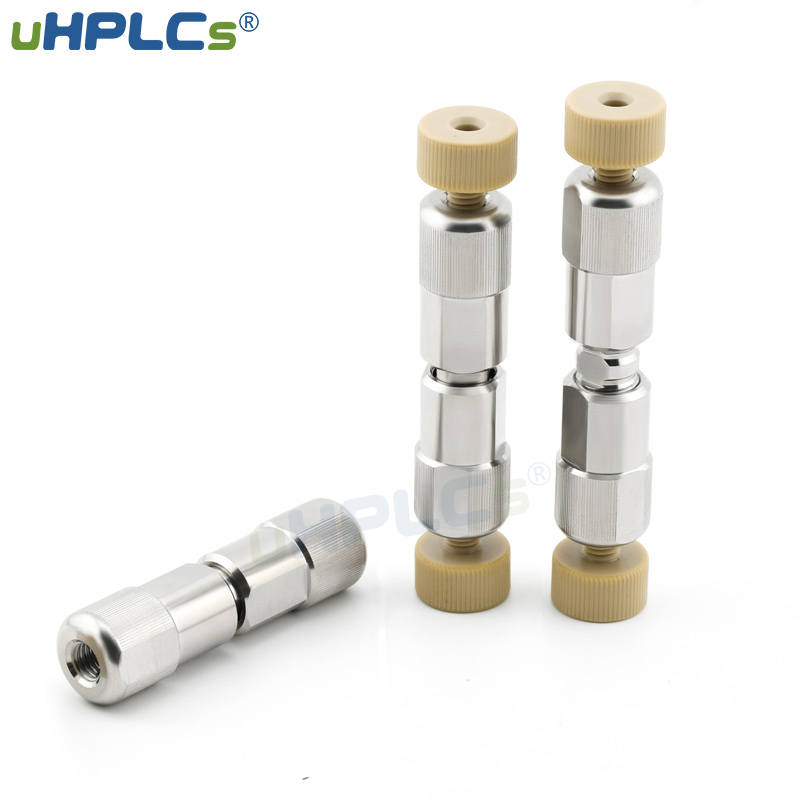
FAQ
1. Whether to use the in-line filter (pre-column) or the guard column or not! I used to use the guard column when analyzing the varieties of traditional Chinese medicine. But when I came to the new company, I found that no one used it, and several laboratories did not even find a guard column, which means that no one has ever used it. Later, I asked an old employee, saying that it might affect the drug analysis. I just want to ask: Will the sample analysis be affected after installing the guard column? Most of the antibiotics we do are cephalosporins.
- It should be said that the addition of a guard column is definitely beneficial to protect the chromatographic column from being blocked by some particulate matter, and it is definitely harmful to the resolution and column efficiency because there is a dead volume in the middle of the guard column, but if the guard column is well connected and as far as possible Controlling its compatibility and frequent replacement, the separation and column effect should not have a big impact.
For cephalosporin antibiotics, it is also necessary to check whether it is a raw material or a preparation. For some raw materials, you can choose to add an in-line filter (an HPLC frit in the middle) according to the loss of the HPLC column. If it is large, it is better to have a guard column.
2. Why does the retention time advance when the same HPLC column analyzes benzoic acid, sorbic acid, and sodium saccharin after analyzing melamine?
- After the HPLC column is contaminated by strongly retained substances, the retention time can be advanced or delayed, depending on the nature of the pollutants, and also on the joint action of the analyte, stationary phase, and pollutants. The situation is more complicated. It is difficult to predict whether it will be ahead or behind. However, during your usual maintenance, pay attention to backwashing the pollutants with organic solvents after the measurement, which can reduce or avoid this situation. It is recommended to use dedicated chromatographic columns for each analysis method, which will save the cost of chromatographic columns in the long run.
3. The same type of HPLC column also has differences in length, particle size, etc. How to choose these?
- Both the length and particle size are used to change the column efficiency, and the selection principle is as long as it is sufficient.
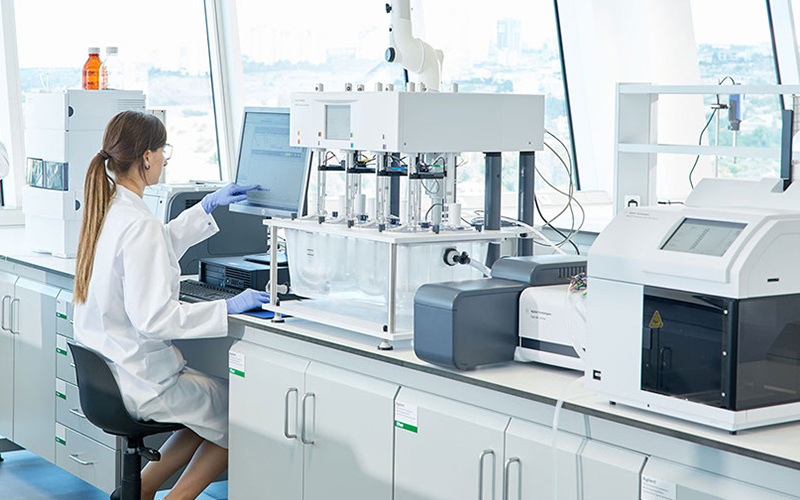
uHPLCs special services:
1. All columns will be tested before delivery and a column efficiency report will be provided.
2. Column loading service is available.